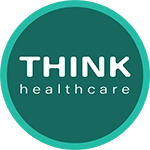Understanding funding for GP surgeries
Before we consider cost-savings and opportunities created by cloud phone systems, it would be prudent to understand how GP surgeries are contracted and centrally funded in England. General practice funding streams are the responsibility of GP partners (one of whom must be a GP) who handle the requirements set out in the contract for their surgery and share the income it provides.
The core contract agreements are the main source of GP surgery income. A ‘global sum payment’ is given to the surgery if mandatory requirements are met, such as ensuring essential services are run satisfactorily, including out-of-hours services.
GP surgeries also receive income from the NHS Quality and Outcomes Framework if performance measures are met. Lastly, private services can be used to top-up NHS funding as part of the patient access policy, but these services must be limited.
To maximise central funding, GP surgeries need to stay ahead of often fluctuating allocations and patient demand. It’s not easy.
Understanding GP surgery expenditure
There are five major areas of outgoings for GP surgeries:
- Office and IT costs
- Clinical consumables
- Rent
- Salaries and staff
- Interest
Staff costs accounts for the lion’s share of the costs. Salaried GPs, nurses, health care assistants and administrative staff are not employed by the NHS, therefore the surgery partners need to ensure these salary costs are met. Any losses are also the responsibility of GP partners, so must be paid from their income.
The traditional phone system is an area where costs start to rise, which is why there is a country-wide move towards GP surgery cloud solutions.
Benefits of cloud phone systems for GP surgeries
While GP surgeries have been paying for ISDN lines and maintenance on outdated, traditional phone systems for many years, they have been missing out on the features that could improve patient access and the everyday working practices of all staff, and could be potentially more cost effective too.
Multi-line phone systems
With increased line capacity, your patients will enjoy quicker access to healthcare professionals. This means your patients have more chance of their call being answered.
Effective greetings and call queuing
All calls are welcomed by a recorded message before being directed to the right member of staff. An automated attendant can also provide pertinent information and advice as part of the greeting or while they are in the queue. You can also communicate the expected waiting time and queue position of each caller.
Access and record patient details
Gain instant access to caller name and details before reception have taken the call by integrating the phone system with the surgery’s patient management software. This will allow you to automatically recognise and log new patient contact numbers.
Call statistics
Gain instant access to metrics to further enhance patient service. Measure missed calls, length of calls, time to answer calls, etc. to effectively plan staffing. Use them as evidence to implement a patient access improvement plan.
Introducing Think Healthcare
Think Healthcare is a healthcare telephony contact management solution designed to help managers, receptionists, and clinical staff to achieve their everyday goals. By linking your phone system and patient management software, and therefore patient records, you will speed up patient verification, improves patient service, and gain assistance with metrics.
Rather than spending any extra funding being released on just cloud telephony, we would advise GP surgeries to invest in a comprehensive contact management package that should result in reduced costs and better patient access while supplying a management interface for the entire surgery or multiple surgeries. It’s not just about trying to improve reception services; Think Healthcare gives surgeries a streamlined communication package that equates to less waiting and more appointments.

